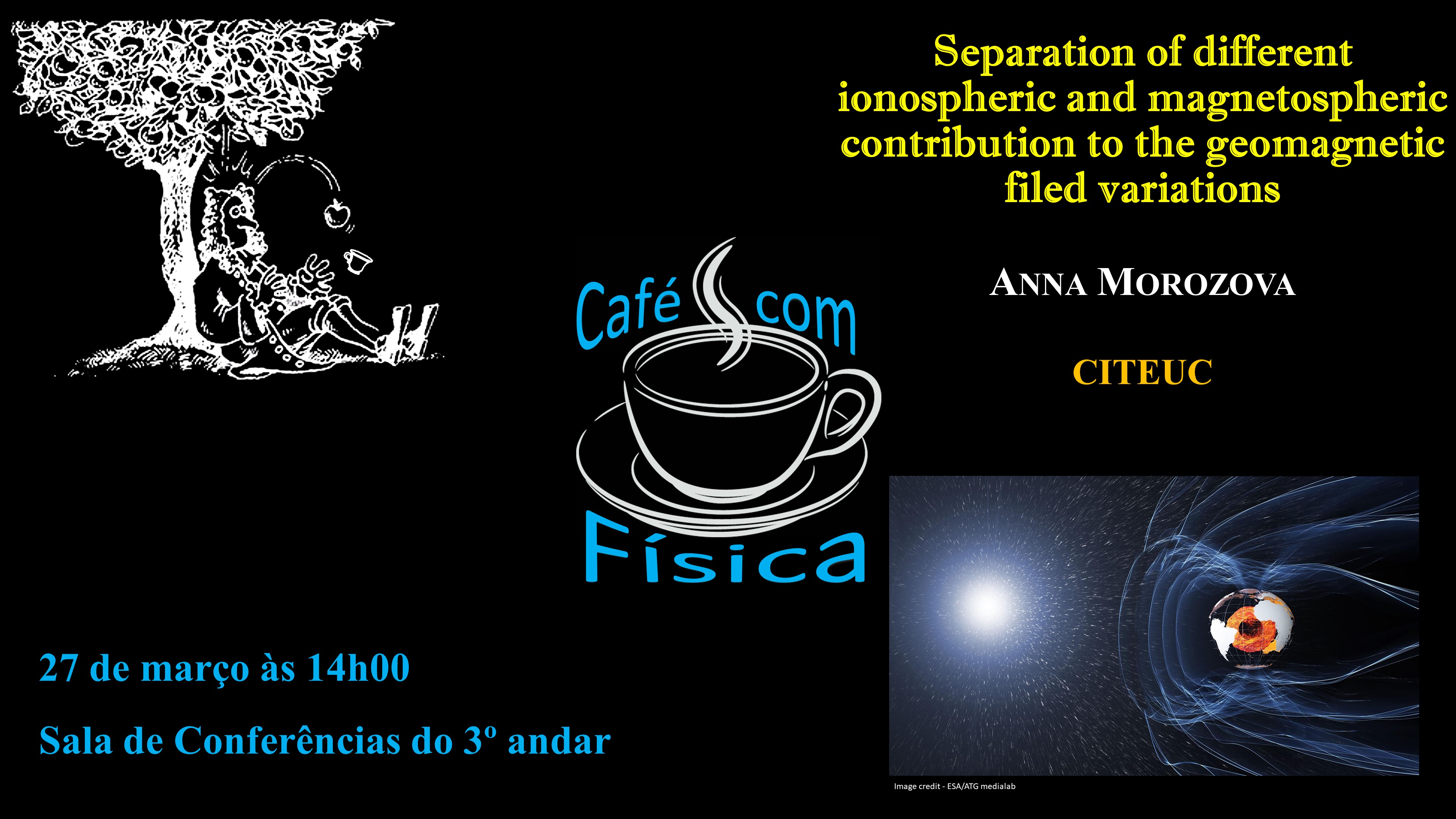Café com Física
Separation of different ionospheric and magnetospheric contribution to the geomagnetic filed variations
by
→
Portugal
Sala de Conferências (Departamento de Física)
Sala de Conferências
Departamento de Física
Universidade de Coimbra
Description

Geomagnetic field (GMF) variations have several origins. The variations attributed to the changes of the internal field due to the flow dynamics in the liquid core appear on time scales from millennia to decades. On the other hand, the variations of the external magnetic field which are caused by the changes of the solar activity level, conditions in the solar wind and rotation of the Earth have time scales from centuries to hours. Separation of geomagnetic filed variations of different origin can be performed by analyzing GMF time series and looking for characteristic patterns that can be compared with the ones predicted by theoretical models.
Recently, FCT has approved an R&D project “Geomagnetically induced currents in Portugal mainland – MAG-GIC”. The goal of this project is to perform an assessment of the hazards associated with geomagnetically induced currents in the high-voltage power lines at the Portuguese mainland using GMF observations performed by the magnetic observatory of the University of Coimbra. The induced currents most dangerous for electric power distribution are produced during periods of strong geomagnetic activity with high values of dH/dt. However, these variations are superimposed on relatively smooth daily background variations which have to be removed from the observations to emphasize sporadic variations occurring during the periods of magnetic field disturbances. The most significant of daily variations (sometimes also called “solar” variations) are the “solar quiet” variation Sq and the “solar disturbed” variation SD.
Here we present the results of a comparison of two methods to extract Sq and SD variations: one is based on the principal component analysis (PCA) and another is the standard approach approved by the geophysical community. We also compare our results with simulations obtained with several ionospheric and magnetospheric models.
This project has funds for several master student grants. One of them should start in September 2019 and will focus on systematic analysis of the differences between the Sq and SD daily series obtained by the PCA-based and the standard methods at different conditions (e.g. season, solar and geomagnetic activity level, length of the analyzed time interval). Students interested in this work are invited to contact Anna Morozova, annamoroozvauc@gmail.com
Organised by
Filipe Veloso e Pedro Costa
